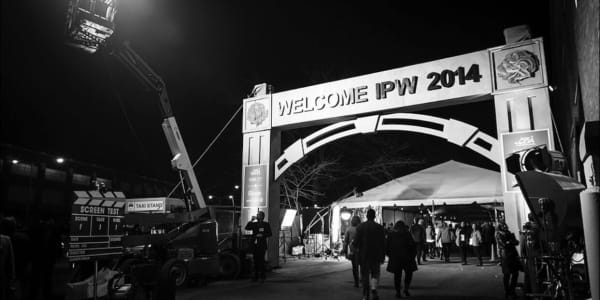2017 has been a rough year for retail.
More than 1,000 stores closed in a single week in June, and Macy's has cut thousands of jobs as part of the retail apocalypse. Earnings announcements by department-store chains Kohl's, Macy's and Dillard's on Thursday revealed a mixed bag of results as these big-box retailers try to turn around their fortunes.
With so many major retailers struggling to stay afloat, it'd be easy to think smaller, mom-and-pop stores are doing even worse, or might be largely fading away. The recent demise of retail giants, however, has left a brick-and-mortar vacuum for local stores to fill.
And many experts say it might be best to stay small. Being a micro-sized business certainly isn't protection against big-box retailers or online competitors, but being a small business that's an integral part of a local community can help build a loyal customer base.
"The vast majority of mom-and-pop businesses are either neighborhood retail businesses or small service businesses," says Leonard Schlesinger, Baker Foundation professor at the Harvard Business School. "As neighborhood businesses, they play a significant role in neighborhood stabilization, [providing convenience for people living close by]."
That stabilization comes in the form of convenience. People living close by don't have to drive long distances to get a manicure or find specialty foods or have an intimate dinner.
That's especially true in ethnic neighborhoods, adds John Grabowski, Krieger-Mueller, joint professor in history at Case Western Reserve University. While the competition has increased, many small businesses in areas that have a predominant ethnic group have shown a knack for survival, whether by stocking specialty foods that big chains don't carry or adding a personal touch to shopping that's lacking at larger and online stores.
"The 'villain' for many years has been Wal-Mart and the big-box stores," he says. "Now we're looking at Amazon and online marketing. [But] you can still see ethnically owned stores operated in ethnic neighborhoods, like Korean stores in Los Angeles, thriving."
The longevity of micro businesses in ethnic neighborhoods is a topic Asian-American historian Shelley Sang-Hee Lee explored in a 2015 paper looking at Asian-Americans and the 1992 Los Angeles riots.
"Ongoing demographic change in Los Angeles since 1992 has shown that the conversation with regard to America's multi-ethnic population is an evolving one," she wrote. "Twenty years after the riots, Korean Americans still dominated mom-and-pop stores in South Los Angeles, but 'Korean-black conflict' no longer dominated the discussion on race relations in the area."
Other dynamics are giving local mom-and-pop stores an edge, according to retail experts. Consumers are increasingly interested in artisanal and locally produced items that are often perceived as higher quality. They are also seeking more authentic experiences from unique store environments small shops can offer. And technology has allowed mom and pops to gain exposure around the world without expanding their footprint by leveraging the power of social media and targeted marketing.
The growth quotient
While some small-business owners might think expansion is the key to greater revenue, too many extend without thinking things through sufficiently.
Access to capital is difficult for very small businesses (since their track record isn't sufficient for most lenders), and many owners don't have the training to manage a larger staff or deal with the daily stresses that come with a larger business or additional locations.
"As they grow, they discover different neighborhoods bring with them a different community and a different set of rules and regulations," says Schlesinger. "And the issues that go with confronting those bureaucratic rules and regulations make it very difficult to run your business and oversee growth. I've run into terrible stories, many times, of people who spend nine to 12 months just trying to get a toilet approved in a restaurant."

Mom-and-pop stores have been part of the American landscape since the country was founded, even if they've become somewhat overshadowed in the last 75 years or so. (In 2016 the smallest employment gains among small businesses were in firms employing five to nine employees, according to the SBA.) Curiously, it was World War II that began that process.
Grabowski, who has studied the history of small businesses, points out that before the transportation revolution, people shopped where they could walk. Even in the 1920s, when chains like Walgreen's and Piggly Wiggly began to move in, they became part of the local community.
The vast majority of mom-and-pop businesses are either neighborhood retail businesses or small service businesses. ... They play a significant role in neighborhood stabilization.Leonard SchlesingerBaker Foundation professor, Harvard Business School
But after World War II, there was an expansion of the highway system, and middle America moved into the suburbs.
"That's when local mom and pops were really hurt the first time, because the neighborhoods began to empty out, and at the same time as they were emptying out, people began to find out about the larger chains that were able to provide less-expensive goods by buying in quantity," he says.
The good news for businesses with one to four employees today is that most of them are quite content to remain that "mom and pop" size. For them it's not about taking over the world or beating the big chains. It's more about just making sure their needs — and those of their families — are met.
"The vast majority of the people who are in that one- to four-employee range are ... basically people who have no deep or profound aspirations for significant organizational growth and just want to make sure they can provide a job for themselves and other family members and have some measure of stability," says Schlesinger. "I think they all have aspirations of making a better living and performing better in their business, but that is different than thinking of a business growth strategy."
So how does the future look for mom-and-pop stores? Pretty bright, actually. The National Retail Federation notes that more than 98 percent of all retailers in America are small business —companies employing fewer than 50 people. And while the most recent National Federation of Independent Business Small Business Optimism Index declined slightly, overall sentiment is still the best it's been since late 2005.
— By Chris Morris, special to CNBC.com




